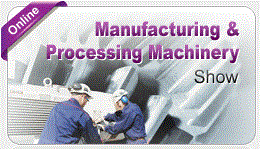The Untapped Potential of Food-Grade PET Recycling
- gtbmsbcs
- 2024年11月27日
- 讀畢需時 3 分鐘
Food-grade polyethylene terephthalate (PET)—the clear plastic commonly used for bottled water, juices, and other beverages—is ubiquitous in our daily lives. However, what happens to these bottles after they are used? While PET recycling is prevalent, reclaiming food-grade PET for food-contact applications poses unique challenges but also significant opportunities.
Current Recycling Practices
The existing recycling system often results in the downgrading of PET, meaning that recycled PET is frequently utilized in applications that do not require the stringent purity standards necessary for food-grade materials. Instead of being transformed into new food containers, recycled PET is often repurposed into items like fleece jackets or carpet fibers. This downgrading limits the environmental benefits of recycling, as it fails to close the loop fully. The production of virgin PET demands substantial energy and resources, making the efficient recycling of food-grade PET a critical step toward sustainability.
Challenges of Food-Grade PET Recycling
Several factors complicate the recycling of PET for food contact:
Contamination: Food residues, labels, and other contaminants can compromise the purity of recycled PET, rendering it unsuitable for food applications. Rigorous cleaning and sorting processes are essential to ensuring quality.
Chemical Degradation: Over time, PET can degrade, affecting its properties and making it less suitable for reuse in food packaging.
Regulatory Compliance: Strict regulations govern the use of recycled materials in food-contact applications. Meeting these standards necessitates meticulous quality control throughout the recycling process.
Opportunities in Food-Grade PET Recycling
Despite these challenges, effectively recycling food-grade PET presents substantial benefits:
Reduced Landfill Waste: Diverting PET bottles from landfills mitigates environmental pollution and conserves valuable resources.
Lower carbon footprint: producing recycled PET requires less energy than creating virgin PET, resulting in a smaller carbon footprint.
Circular Economy: A robust food-grade PET recycling system contributes to a circular economy where materials are reused and repurposed, minimizing waste and maximizing resource efficiency.
Cost Savings: Utilizing recycled PET can lower the costs associated with producing new food packaging.

The Future of Food-Grade PET Recycling
Advancements in recycling technologies are paving the way for more efficient and effective food-grade PET recycling. Key developments include:
Improved Sorting and Cleaning Technologies: Sophisticated sorting systems can effectively remove contaminants, ensuring higher purity levels of recycled PET.
Chemical Recycling: This innovative process breaks down PET into its building blocks, allowing for the production of high-quality food-grade PET resin.
Enhanced Quality Control: Stringent quality control measures throughout the recycling process are essential to ensure compliance with food safety regulations.
The future of food-grade PET recycling relies on collaboration among consumers, businesses, and policymakers. Increased consumer awareness, improved recycling infrastructure, and supportive government policies are all vital to unlocking the full potential of this valuable resource. By embracing innovative technologies and promoting responsible practices, we can move closer to a truly circular economy for PET plastics, reducing our environmental impact and fostering a more sustainable future.
Aceretech Machinery's Contribution
Aceretech Machinery is at the forefront of this initiative with its development of a food-grade PET recycling line. Their innovative technology focuses on enhancing the efficiency and effectiveness of reclaiming food-grade PET and addressing contamination issues through advanced sorting and cleaning processes. This initiative not only supports sustainability efforts but also aligns with regulatory compliance requirements for food-contact applications. By pushing the boundaries of what's possible in plastic recycling, Aceretech Machinery is paving the way for a greener future while maximizing resource efficiency in the industry.











留言